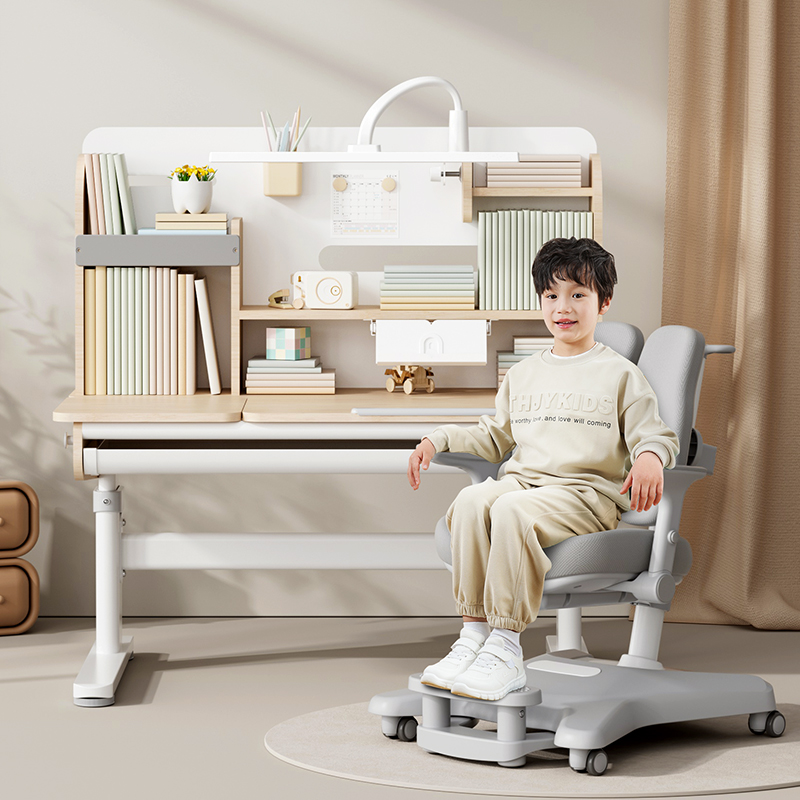
1. Introduction
In modern educational and home environments, kids' study desk and chair sets are essential for creating a conducive learning space. Plastic is widely used in kids chairs, table and chairs, and junior chairs due to its lightness and affordability. However, food - grade PP plastic and regular plastic differ significantly in safety, which this experiment aims to clarify for parents, educators, and manufacturers.
2. Plastic Materials Overview
2.1 Food - Grade PP Plastic
Food - grade PP (polypropylene) plastic is a non - toxic, odorless thermoplastic. It has a milky - white appearance and excellent resistance to oils, weak acids, and alkalis. With a melting point of 160 - 175 °C, it can withstand up to 150 °C, making it the only common plastic safe for microwave use. Its application in baby bottles reflects its high safety level, and it can be disinfected by steaming or boiling.
2.2 Regular Plastic
Regular plastic includes polyethylene (PE), polystyrene (PS), polyvinyl chloride (PVC), etc. PE is flexible but has low heat resistance; PS is brittle and may release harmful substances when heated; PVC often contains harmful additives. Regular plastics are mainly used in non - food - contact applications due to their lower cost, but their safety for children's products is questionable.
3. Experimental Design
3.1 Sample Selection
Food - grade PP plastic samples came from certified children's furniture brands, including chair seats, backs, and armrests. Regular plastic samples were from low - cost, unbranded kids chairs, suspected to be of lower quality.
3.2 Safety - Related Test Items
Toxic Substance Migration Test: Simulated body fluids were used to soak samples. High - performance liquid chromatography and atomic absorption spectrometry analyzed heavy metals (lead, mercury, cadmium), BPA, and phthalates.
Heat Resistance and Deformation Test: Samples were heated to 100 °C, 120 °C, and 150 °C for 30 minutes each, observing for deformation, softening, and odor release.
Aging Resistance Test: Samples were aged in an artificial chamber, then retested for toxic substance migration and heat resistance.

4. Experimental Results
4.1 Toxic Substance Migration Test Results
Food - grade PP plastic samples showed undetectable levels of heavy metals and BPA, with extremely low phthalate content. Regular plastic samples had lead levels 2 - 3 times above the safety limit, BPA detected in over half of samples, and high phthalate levels.
4.2 Heat Resistance and Deformation Test Results
Food - grade PP plastic remained stable at 100 °C and 120 °C, with only slight softening at 150 °C and no harmful gas release. Regular plastic deformed at 100 °C, became sticky at 120 °C, and melted with black smoke at 150 °C.
4.3 Aging Resistance Test Results
Aged food - grade PP plastic maintained low toxic substance levels and withstood 120 °C. Aged regular plastic had a 2 - 5 - fold increase in toxic substances and cracked at 80 °C.
5. Analysis of Results
Food - grade PP plastic's stable molecular structure reduces the release of harmful substances. Its strict manufacturing process and compliance with food - contact standards ensure safety. Regular plastics, especially from unregulated sources using recycled materials, have unstable structures and lack quality control, leading to safety risks.
6. Implications for Choosing Learning Chairs
6.1 Importance of Material Safety for Children
Children's developing immune systems make them vulnerable to harmful substances in plastic. BPA can disrupt the endocrine system, and heavy metals can damage the nervous system. Thus, safe chair materials are crucial.
6.2 Recommendations for Parents and Educators
Prioritize food - grade PP plastic chairs. Check for safety certifications like FDA or REACH. Avoid uncertified regular plastic products and also ensure overall chair quality and stability.
6.3 Suggestions for Manufacturers
Use food - grade PP plastic, improve production processes, and strengthen quality control. Be transparent about materials to build consumer trust.
7. Conclusion
Food - grade PP plastic outperforms regular plastic in safety for learning chairs. It is essential for children's health to choose products made of food - grade PP plastic. Future research should focus on developing even safer materials for children's furniture.

